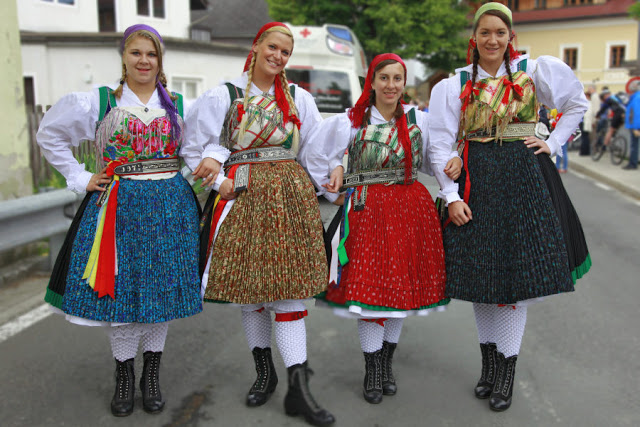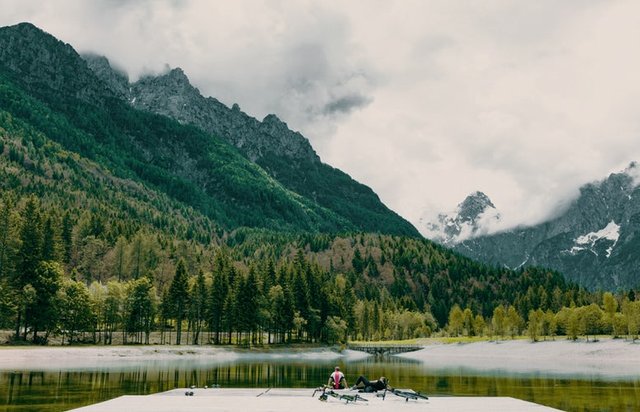History of the Slovenian peoples
Срб
СЛОВЕНСКИ ЈЕЗИЦИ
Словенски језици чине групу језика која, заједно са балтичким језицима, формира балто-словенску грану индоевропских језика. Сви словачки језици су потекли од прасловенског језика, данас изумрлог.
Словенски језици се деле на три групе: јужну, источну и западну.
(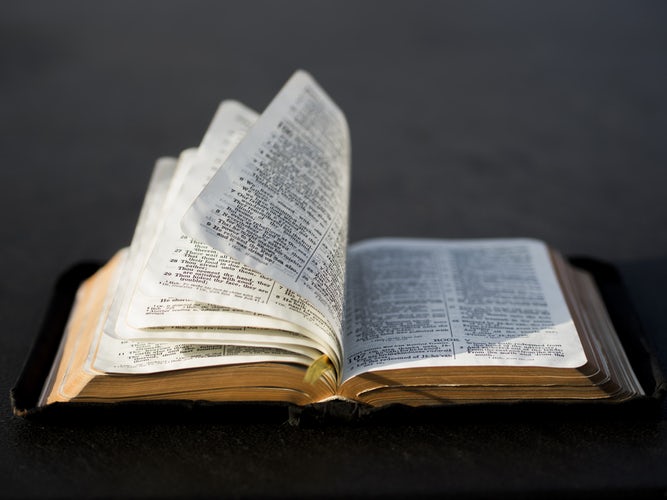 )
)
ПОРЕКЛО СЛОВЕНА
Словени чине једну класу народа из Јафетовог рода којем припадају и Индијци, Медијци, Трачани, Готи, Келти и Лети као језичке и народне класе.
Време и начин у којем се одвојио словенски народ од народа Јафета, као грана од стабла у Азији или у Европи, остаће увек загонетка. У историјски потврђеној епохи појављују се Словени већ проширени и одвојени од својих осталих братских народа Индијаца, Медијаца. Персијанаца, Грка, Латина, Келта и Германа, сасвим издвојени и у збијеним масама, као и у разбијеним хордама на великим просторима средње Европе, а делимично и Азије. Пошто нас сигурни трагови наводе на то, да су они у епохи феничанске светске трговине већ имали своја европска станишта, можемо да се одрекнемо оног недостижног које се налази са оне стране и да посматрамо њихову праисторију као историју која припада европском тлу и само тражимо расветљење у том просторном и временском обручу.
Они нису могли оставити сведочанства о својој историји до великих сеоба средином првог миленијума наше ере јер нису имали писменост.
ВЕЛИКА СЕОБА НАРОДА
Велика сеоба народа је период у историји човечанства који обележава велики покрет народа, који је трајао 5 векова, од продора Хуна кроз тзв. "Врата народа", тј. простор између планине Урал и Каспијског језера, па све до насељавања Угара у Панонску низију у 9. веку. Та сеоба 375. је потресла Римско царство, тачније њен западни део. Предводили су је Хуни, азијско-монголско племе, које је са својом великом војском стигло до Рима. Многа друга племена су појачала нападе на Рим и срушила његово западно царство. Франци, Готи, Вандали и друга племена поделили су територије Западног Римског царства што је била последица Велике сеобе народа.
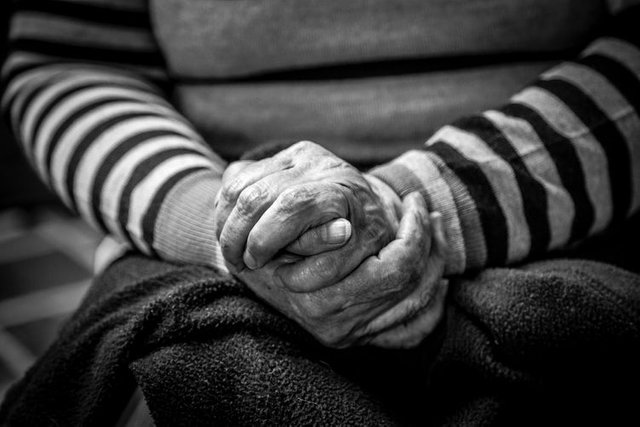
СЛОВЕНИ НАКОН ВЕЛИКЕ СЕОБЕ НАРОДА
Када су се сместили на својим територијама, Словени су успоставили прве облике држава, којима су управљали кнезови са ризницом и војском, као и прве класне поделе, са племићима који су пристајали уз Франачку и Свето римско царство. Карантанија, која је покривала данашњу Аустрију и Словенију, била је једна од првих словенских држава у Средњој Европи, а на северу су формиране и Самова држава, Њитра и Моравска. У том раздобљу је постала и држава панонских Словена под називом кнежевина Доња Панониј, као и територија под контролом племена Северани, али ширење Мађара и Влаха, као и германизација Аустрије раздвојили су северне од јужних Словена. На словенском југу формиране су кнежевине Србија, Хрватска, Дукља, Травунија, Захумље, Паганија, као и кнежевина између Драве и Саве. Бугарски канат, који су основали турскијски Бугари, врменом је постао словенска држава. На словенском истоку је формирана Кијевска Русија, а своје државе су формирали и Пољаци и Чеси. У старијој историји није било никаквог јединства Словенских народа, иако је повремено било сарадње.
ПРОПАСТ И ОБНОВА СЛОВЕНСКИХ ДРЖАВА
Током средњег века, Словени су покушавали да очувају своју државност, трпећи притисак својих несловенских суседа, Византинаца, Франака, Мађара, Хазара, Немаца, Млетака, Монгола и Турака. Почетком новог века, од словенских народа су своју државност успели да очувају само Руси, Пољаци и Дубровчани, док су се остали Словени нашли под влашћу Турака, Хабзбурга и Млетака. Крајем 18. века пропада и Пољска држава, а потом у 19. веку и Дубровачка република. Међутим, 19. век доноси и обнову државности Србије, Црне Горе и Бугарске. Већина словенских народа, изузев Лужичких Срба, ослободиће се стране власти у првој половини 20. века, након протеривања Османског царства са највећег дела Балкана, као и након распада Хабзбуршке монархије 1918. године. Тада ће бити обновљена Пољска држава, а формираће се и Чехословачка, као и Краљевство Срба, Хрвата и Словенаца (Југославија). У исто време, Руска Империја се трансформише у Совјетски Савез, којим ће и даље доминирати Руси.
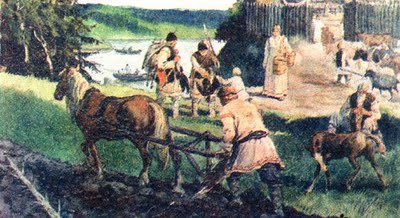
Тежак период за већину словенских народа је био Други светски рат, када су велики део словенског државног простора окупирали Немци и њихови савезници. У стварању свог новог поретка, Немачка је анектирала Пољску и Чешку, док је државну самосталност признала Словачкој, али без јужних територија које је анектирала Мађарска. Југославија је окупирана и подељена, а делове њене територије су анектирале Немачка и друге чланице Сила Осовине. Иако је државна самосталност номинално призната Независној Држави Хрватској и Србији, обе су биле под окупацијом немачких, односно у случају независне државе Хрватске и италијанских трупа. Црној Гори је такође номинално био признат одређен степен државности, али у оквиру Мусолинијеве велике Италије. Бугарска, иако словенска држава, је била у савезу са Немачком и, заједно са њом, учествовала у окупацији делова Југославије, као и дела Грчке. Немци су, такође, окупирали и велики део Совјетског Савеза, али су Совјети успели да зауставе немачку инвазију и да пређу у контранапад, којим су ослободили целу источну и југоисточну Европу немачке окупације.
Након Другог светског рата, југословенска, чехословачка и пољска држава су обновљене, док Совјетски Савез, уз Сједињене Америчке Државе, постаје једна од две најзначајније светске силе, које су се у периоду Хладног рата такмичиле за контролу над деловима Света, као и у освајању космоса. Крајем 20. века, Совјетски Савез, Југославија и Чехословачка се распадају, чиме настају нове словенске државе - Русија, Украјина, Белорусија, Чешка, Словачка, Словенија, Хрватска, Босна и Херцеговина, СР Југославија и Македонија. Ср Југославија, која је 2003. године трансформисана у државну заједницу Србија и Црна Гора, се такође распада 2006. године, чиме настају независне државе Србија и Црна Гора.
СЛОВЕНИ ДАНАС
Словени данас заузимају већи део Европе и знатан део Азије. У Европи су најбројнија етничка скупина (око 35%). Словени су у језичком и културном погледу најкомпактнија етничка скупина у Европи. Разлике између појединих словенских језика мање су него, на пример, разлике између северних и јужних немачких дијалеката. Поред језичке блискости, која је најизразитија (упркос великој отворености словенских језика за позајмице из других језика), уочљива је и сродност духовне и материјалне стране словенских култура у многим аспектима: у народној књижевности, у веровањима и обичајима, у ношњи, архитектури, музици итд. Насупрот поменутом поређењу стоји чињеница да се немачко језичко и културно подручје већим делом налази у границама једне државе, док су словенски језици и културе у том погледу изразито подељени. Узроци таквом стању су бројни и разноврсни; једним делом се налазе изван словенског света.
Eng
SLOVENIAN LANGUAGES
Slovenian languages form a group of languages which, together with the Baltic languages, form a balto-slovenian branch of indo-European languages. All Slovak languages are derived from the Slavic language, nowadays extinct.
The Slovenian languages are divided into three groups: southern, eastern, and western.
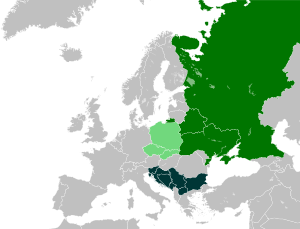
Slovenian languages in Europe
Dark green: South-Slovenian
Light green: West-Slovenian
Medium dark green: East-Slovenian
ORIGIN OF SLOVENIAN PEOPLES
The Slovenian peoples make up one class of people from the Japhethian clan, which also includes the Indians, the Medes, the Tracians, the Goths, the Celts, and the Lets as linguistic and national classes.
Time and the way in which the people of Slovenia separated from the people of Jafet, as a branch of a tree in Asia or in Europe, will always remain a puzzle. In the historically confirmed epoch, the Slavs have already been enlarged and separated from their other brotherly Indians, the Mediators. Persians, Greeks, Latins, Celts and Germans, completely separated in compact masses, as well as in broken hordes in large areas of Central Europe, and partly Asia.
Since the traces lead us to the fact that, in the era of Phoenician world trade, they already had their own European station, they can renounce the unworthy that he has established on the one hand and observe his prehistory as a history belonging to the European world, and we are only seeking redress in that spatial and time rings.
They could not leave testimonies of their history to large semblings in the middle of the first millennium of our era because they did not have literacy.
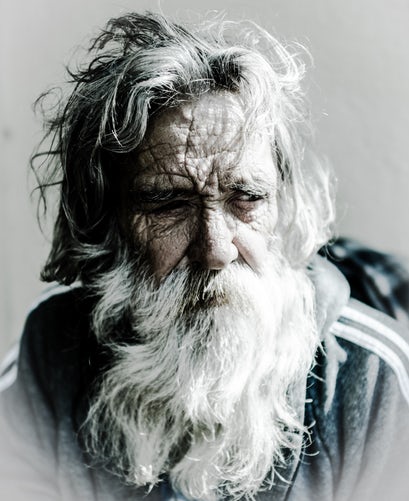
A GREAT MIGRATION OF PEOPLE
The great tribe of the people is a period in the history of mankind, which marks the great movement of the people, which lasted 5 centuries, from the penetration of Hun through the so-called "Gate of the Nations", ie. the space between the Ural Mountains and the Caspian Lake, until the settlement of Ugar in the Pannonian Plain in the 9th century. This seal of the 375th shook the Roman Empire, more precisely its western part. They were led by Hun, an Asian-Mongol tribe, who with his great army came to Rome. Many other tribes intensified attacks on Rome and demolished its western empire. The Franks, Goths, Vandals and other tribes divided the territories of the Western Roman Empire as a result of the Great Emigration of the Peoples.
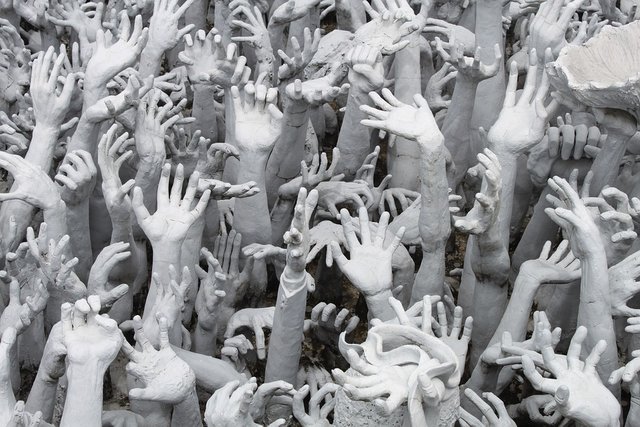
LITTLE AFTER LARGE PEOPLE OF PEOPLE
When they settled on their territories, the Slavs established the first forms of states ruled by princes with the treasury and the army, as well as the first class divisions, with the nobles who associated with Franca and the Holy Roman Empire.Carantania, which covered today's Austria and Slovenia, was one of the first Slovene statesmen in Central Europe, and in the north, the Samova State, Nitra and Moravia were formed.
In that period, the state of Pannonian Slavs became known as the Principality of Lower Pannonium, as well as the territory controlled by the Severana tribe, but the expansion of the Hungarians and the Vlachs, as well as the Germanization of Austria, separated the northern ones from the southern Slavs. In the Slovene south, the principals of Serbia, Croatia, Duklja, Travunija, Zahumlje, Pagani, and the Principality between the Drava and the Sava.
The Bulgarian channel, which was founded by the Turkish Bulgarians, became a Slovene state by virtue. In the eastern part of the east, the Kievan Russia was formed, and its states were formed by the Poles and the Czechs. In the older history, there was no unity of the Slovenian people, although there was occasionally cooperation.
DISASTER AND RENOVATION OF SLOVENIAN COUNTRIES
During the Middle Ages, the Slovenes tried to preserve their statehood, enduring the pressure of their non-Slovenian neighbors, Byzantines, Franks, Hungarians, Khazars, Germans, Mecca, Mongols and Turks. At the beginning of the new century, only Russians, Poles and Dubrovnikites managed to preserve their nationality, while the rest of the Slavs were under the rule of Turks, Habsburgs and Mecca. At the end of the 18th century the Polish state collapsed, and then in the 19th century and the Dubrovnik republic. However, the 19th century brought the restoration of the statehood of Serbia, Montenegro and Bulgaria.
Most of the Slovenian peoples, except the Luksic Serbs, will be freed by the foreign authorities in the first half of the 20th century, after the expulsion of the Ottoman Empire from the largest part of the Balkans, and after the collapse of the Habsburg Monarchy in 1918. Then the Polish state will be restored, and Czechoslovakia, as well as the Kingdom of Serbs, Croats and Slovenes (Yugoslavia) will be formed. At the same time, the Russian Empire is transformed into a Soviet Union, which will continue to dominate the Russians.
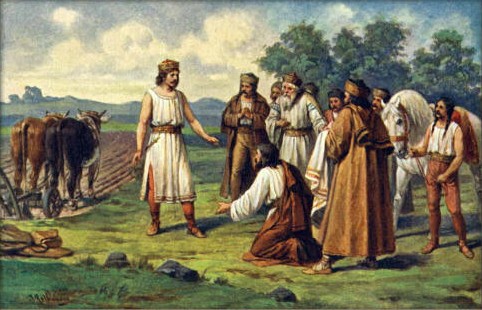
The difficult period for most of the Slovenian peoples was the Second World War, when a large part of the Slovenian state space was occupied by Germans and their allies. In the creation of its new order, Germany annexed Poland and the Czech Republic, while state independence was recognized by Slovakia, but without the southern territories annexed by Hungary.
Yugoslavia was occupied and divided, and parts of its territory were annexed by Germany and other members of the Force of Axis. Although state independence was nominally recognized to the Independent State of Croatia and Serbia, both were occupied by Germans, that is, in the case of NDH and Italian troops. Montenegro was also nominally recognized a certain degree of statehood, but within Mussolini's large Italy.Bulgaria, although the Slovene state, was in alliance with Germany and, along with it, participated in the occupation of parts of Yugoslavia, as well as part of Greece. The Germans also occupied a large part of the Soviet Union, but the Soviets succeeded in stopping the German invasion and crossing the counter attack, releasing the entire eastern and southeastern Europe of the German occupation.
After the Second World War, the Yugoslav, Czechoslovak and Polish states were restored, while the Soviet Union, along with the United States, became one of the two most important world powers that, during the Cold War, competed for control over parts of the Council, as well as in the conquest of the cosmos.
By the end of the 20th century, the Soviet Union, Yugoslavia and Czechoslovakia were dissolving, creating new Slovenian states - Russia, Ukraine, Belarus, the Czech Republic, Slovakia, Slovenia, Croatia, Bosnia and Herzegovina, FR Yugoslavia and Macedonia. Sr. Yugoslavia, which was transformed into the state union of Serbia and Montenegro in 2003, also decays in 2006, thus forming independent states of Serbia and Montenegro.
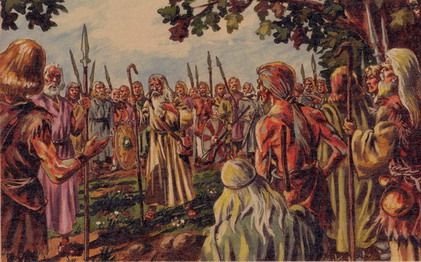
SLOVENIAN PEOPLES TODAY
Slovenes now occupy much of Europe and a significant part of Asia. In Europe, the most numerous ethnic group (about 35%). Slovenians are the most compelling ethnic group in Europe in language and cultural terms. Differences between certain Slovenian languages are less than, for example, the differences between the northern and southern German dialects.
In addition to the language of closeness, which is most pronounced (despite the great openness of Slovene languages for borrowing from other languages), the spiritual and material side of Slovenian cultures is also evident in many aspects: in folk literature, in beliefs and customs, in costumes, in architecture, in music, etc. .
In contrast to the above comparison, the fact is that the German linguistic and cultural area is largely within the boundaries of one state, while Slovene languages and cultures are distinctly divided in that respect. The causes of this condition are numerous and diverse; partly located outside the Slovenian world.
